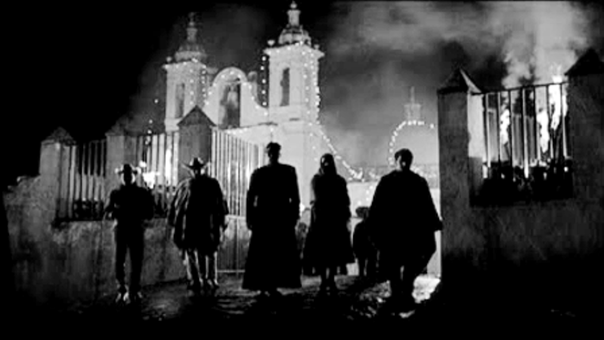Canoa by Felipe Cazals
by Julio César Durán

Towards the middle of the 70's the young vigour of the preceding decade in Mexico, was landing on a more fertile ground, although not without numerous burdens. In the cinematographic as well as in the social aspect, the generation of rupture that changed the way we see one another (in cinema, Rubén Gámez, Alfredo Joscowicz, Juan Ibáñez, Alberto Isaac, Leobardo López Arretche among others) lays the foundations for a different cinema, one with different needs to those of the great perishing studios.
With moments as fresh and specific as the “Halconazo” from June 10, 1971 and with a presidential system that radically centralized the power, the filmmaker Felipe Cazals, member of the aforementioned generation, decides to talk about uncomfortable issues. His eye combines audiovisual techniques resulting in a cinematographic hybrid which is original to this day: Canoa (1976).
The story is based on a well-known case of news sensationalism occured in the iconic 1968: five workers from the University of Puebla, go on a climbing trip to the Malinche mount and are labeled as "communist students," the label is used to satanize and ignite the hatred and violence towards groups with different political ideas to those of the stablishment. The anecdote ends in tragedy; encouraged by the priest of the town of San Miguel Canoa, and before the local authority's indiference, the community savagely attacks the five workers.
Cazal's long feature, written by the Mexican scriptwriter, writer and reasearcher Tomás Pérez Turrent, still shakes the audience's seats thanks to its currency. Unfortunately, the topic is prevalent in the Mexico of the XXIst Century, but the intensity and passion with which Canoa is narrated rescues the terrible story from a mere polemic to place it in a reflexive plane. Departing from a sui generis scenery, we see the force of the actors who incarnate (not only interpret) the country man, the priest, the young people of the urban context, all of them devoid of the clichés of the cinema of the last 30 years, proposing with this, a subverted and modified stereotype.
The construction of a visual reportage, that gradually comes across with a false documentary, will engage the spectator's interest and will give rise to a more or less conventional narrative of the details and interpretations of its time, and will round up in every moment, a political stance as well as an aesthetic declaration that does not separate form from content.
At decades away from Canoa, it's still stiring our conscience and is undoubtedly a crucial film; in other words, it has become a classic of the Mexican cinema which surprises due to its contemporary approach at 40 years of its realization.

